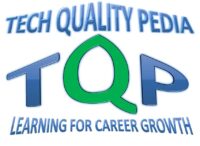5S is an improvement process to eliminate the waste that originates from a poorly organized workplace/area. It is the first basic tool and foundation stone of Lean manufacturing and an organization cannot succeed without it.
The 5S technique is not just for manufacturing industries, it is also widely applied in service sectors, hospitals, homes, and offices.
It is a systematic approach to Organization Improvement.
5S isn’t just a one-time activity, it’s a continual Quality Improvement Process. No TQM, TPM, SIX SIGMA, and LEAN Manufacturing are possible without it.
5S formed with the first letter of Japanese words-Seiri, Seiton, Seiso, Seiketsu, and Shitsuke.

Table of Contents
5S System implementation steps
- Seiri or Sorting out
- Seiton or Set in Order or Organize
- Seiso or Shine or Sweep
- Seiketsu or Standardize
- Shitsuke or Sustain or Self Discipline
We get 6S with the addition of Safety as an additional “S”. Safety is essential at the workplace, therefore, you can also add Safety to make it a more specific and mandatory step of the 5S implementation process.
5S Meaning | 5S full form in Japanese and English language
1S: Seiri – Sorting Out
1S Meaning
- It helps to segregate necessary & unnecessary items and eliminates unwanted items.
- It essentially means organizing/putting things in order
1S Activity or Action to be taken
- Segregate Wanted and Unwanted items from the work area/place.
- Remove Unwanted ones.
1S Benefits or Success Indicators
- Space Saving.
- Fastest access for required items.
- Improvement in Work Efficiency.
- Disposed items reduced your inventory.
2S: Seiton – Set in Order – Organize – Systematic Arrangement
2S Meaning
- This step essentially means arranging items in a systematic way, for easy accessibility and using them in the best order.
2S Activity or Action to be taken
- Decide the place and Set things in order.
- Put everything in its place.
- Keep accessibility as easy as possible.
- Keep heavy items on the ground floor nearer to entry.
2S Benefits or Success Indicators
- Search time reduced.
- Time saved in handling material.
3S: Seiso – Shine – Sweep
3S Meaning
- Shine everything-cleaning.
- This step makes the workplace neat & clean by eliminating dirt, dust & other foreign matter.
3S Activity or Action to be taken
- Clean your m/c, tools, equipment, jig/fixture, work table, rack, records, shop floor, etc.
- Keep the workplace spotless and make it easy to clean.
- Make it easy to find out/Inspect abnormalities.
3S Benefits or Success Indicators
- Healthy work environment.
- Abnormalities are clearly visible and easily corrected.
- Reduction in m/c breakdown/downtime.
- Accidents reduction, Safe workplace.
- Quality Improvement and Rejection reduction.
4S: Seiketsu – Standardization
4S Meaning
- This step is a combination of Seiri, Seiton, and Seiso as an ongoing activity to maintain a clean, safe, and well-organized workplace.
4S Activity or Action to be taken
- Put in place standard procedures for all activities.
- Make a system to review Standard Operating Procedures-SOPs and Work Instruction-WIs at a defined fixed interval.
4S Benefits or Success Indicators
- Improved Productivity and Quality.
- Problems are exposed easily and solved.
- Reduced Costs.
5S: Shitsuke – Sustain – Self Discipline
5S Meaning
- Self Discipline.
- This step is to ensure that everyone must adhere to the rules and makes it a habit.
5S Activity or Action to be taken
- Fix responsibilities for implementing and evaluating systems/standards.
- Make a Self Discipline to follow the set standards.
- Regular Training and updates to everyone about “4S.”
- Forming Habit/Culture.
- Check how well the system/set standards are working and sustaining itself.
5S Benefits or Success Indicators
- Total Employee Involvement-TEI.
- The habit of doing it Right First Time and Every Time.
- Higher Employee Satisfaction level.
What are Unwanted Items/things?
Machine, Tools, Jig/Fixture, Measuring devices
- Damage tools, Inserts/bits, etc.
- Old/damaged Measuring and inspection equipment not being used.
- Old/damaged jigs and fixtures not in use.
- Old/damaged machine not in use or operational.
Passages, Pillars and Corners
- Junk, dust, and material not required accumulated in corners and besides pillars.
Rack, Shelves, and Lockers
- Old/Outdated and damaged records/things gathered that nobody ever uses.
Walls and Boards
- Outdated/damaged display boards/notices/posters.
- Damage and dirty walls.
- Tape gum marks on mirror/wall/door/boards.
Work in Process (WIP) parts
- Rework or Repaired items accumulated over a period of time.
- Parts/things fallen below or behind the machine.
- Excess WIP.
- Rejection accumulated and not cleared timely.
- Material lying for disposal decision.
5S Benefits
- Cleaner, Hygienic and better organized workplace.
- Shop floor operations become safer and easier.
- Improved Quality and Productivity.
- Results and problem are clearly visible to everyone.
- Visible results enhance generation of more new kaizen/ideas.
- Higher Employee Morale.
- Increased Total Employee Involvement-TEI and Satisfaction level.
- Reduced Quality and Productivity Cost.
- Enhanced organization reputation/Image.

